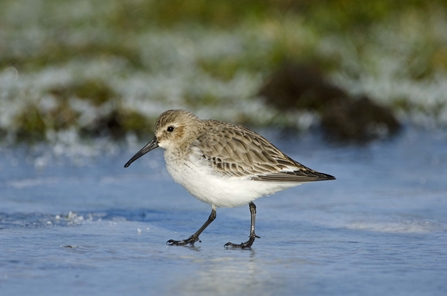For many species such as bats, toads and dormice, there is a late-autumn rush to feed up before hibernation. But many animals and birds have different ways of surviving the lean winter months and can be seen by reserve visitors.
Watch out for grey squirrels and jays hurrying around gathering and caching nuts and seeds. Both bury hazelnuts and acorns, creating a mental map which they use to relocate their larders during the winter. Wood mice and bank voles also hoard nuts and can sometimes be heard and then seen scurrying across the woodland floor.
As the trees pack away their winter leaves, they gradually reduce the green chlorophyll revealing fiery reds, orange and yellows. Trees such as beech can hold onto their leaves right through the winter, but most deciduous trees quickly create a carpet of discarded leaf litter on the woodland floor. This layer creates a whole new habitat for many invertebrates and close examination can reveal a whole community of ‘mini beasts’ including beetles, springtails, spiders and even pseudoscorpions... tiny little predators less than half a cm long. Don’t worry, they don’t sting!
Winter also brings migrating birds to the reserves, seeking food and shelter. Waterfowl such as teal, wigeon and pochard join resident mallards and tufted ducks. Some waders favour our reserves to colder habitats further north and snipe may be seen probing in soft mud with their long bills. Passage migrants such as wood sandpiper or spotted redshank might drop briefly onto our wetlands for the lucky observers. At some reserves it’s possible to come across woodcock hiding in damp woodlands, though usually these are almost impossible to see with incredible cryptic plumage.


